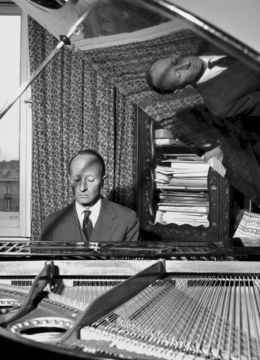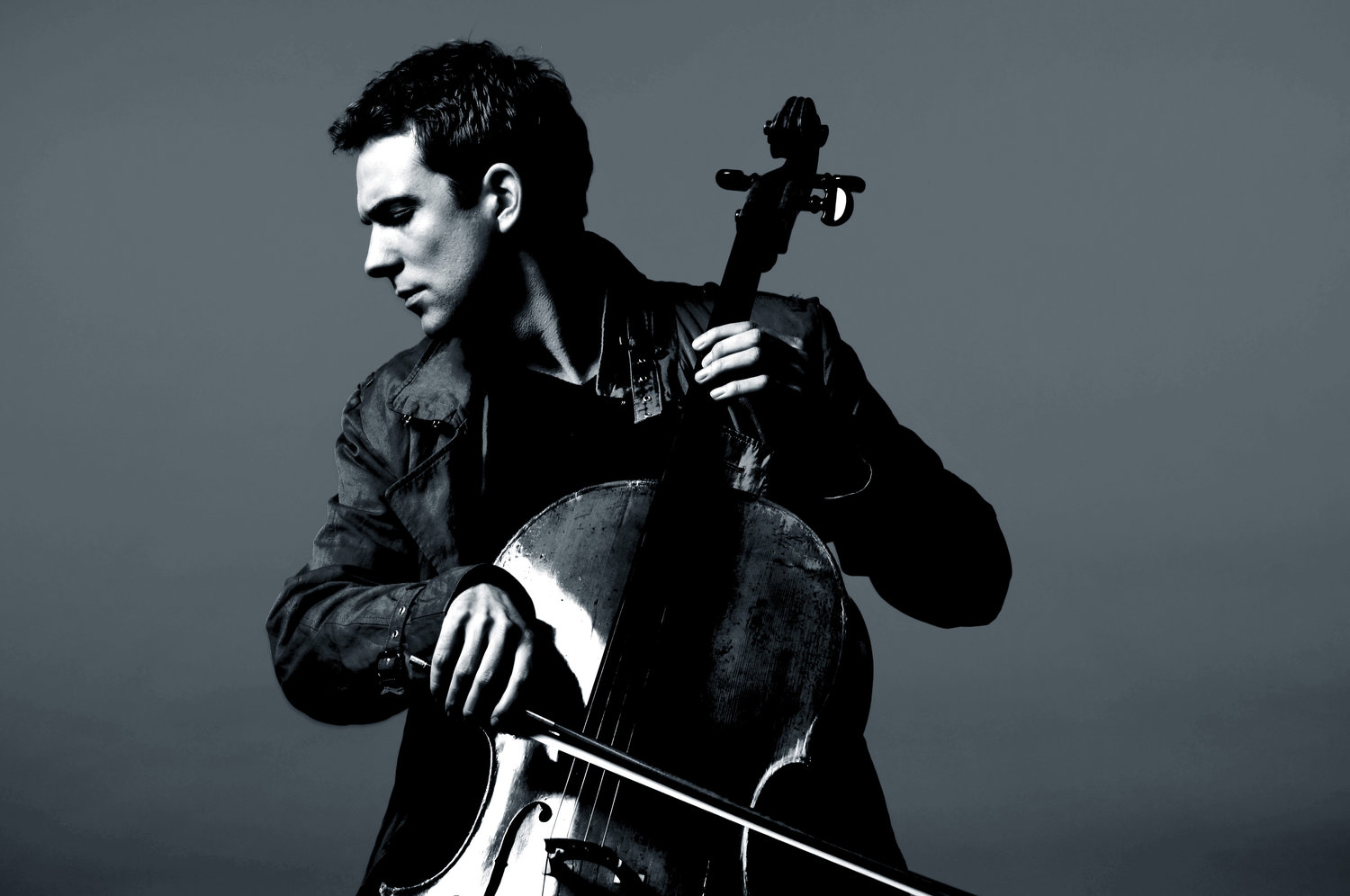A Symphonic Sampler
Brahms, Dvořák, and Lutosławski at the Nashville Symphony
Laura Turner Hall was packed last Friday night and for good reason. Names like Brahms and Dvořák are sure to draw in crowds under any circumstances, but the addition of a soloist with the skill, stage presence, and international renown of Johannes Moser makes for an unmissable concert. The program worked so well not just for its inclusion of crowd favorites, nor just for Moser’s eye-catching, rockstar-like stage presence, but instead because of how each of the three works programmed manage to forefront a completely different strength of the symphony orchestra as an ensemble.

The opener, Lutosławski’s Symphonic Variations, shows off the diversity and richness of the orchestra’s sound palette, developing its haunting thematic material mostly through colorful, short-lived episodes that swirl around the ensemble in shifting moods and textures. Lutosławski’s approach to structure and thematic development contrasts so well with the night’s closer, Brahms’ Symphony No. 4. While the pieces certainly have a fair amount of similarities—it’d be hard to walk away from a good performance of the Fourth Symphony without some impression of Brahms’ tendency for sudden musical mood shifts, for example—these two works ultimately show the radical change within just a generation or two not only in the harmonic language or timbral possibilities of orchestral music (a question largely of taste and aesthetic preference), but in just exactly what it was a composer understood themselves to be doing in the first place.
Brahms’ music may often come across as severe and angsty in its tone, but there’s a compositional playfulness at its heart that permeates even a piece like the Fourth Symphony, which NSO program annotator Thomas May describes as having “no sweetener here to palliate its harsh truths.” The playfulness lies primarily in the treatment of often simple musical motives, like the opening melodic figure characterized by leaps of thirds, transforming and transfiguring them in ways alternatively charmingly clever and tragically devastating across a movement or whole piece, while at the same time using this thematic development as a structuring paradigm for the piece as a whole. Of course, this practice is nowhere close to a unique trait of Brahms’ music. For a certain type of 19th century (especially German nationalist) outlook, it’s the whole raison d’être of large-scale orchestral music, and perhaps classical music as a whole.
But that outlook had definitely changed by the 1930s. The competition of Russian and French nationalist styles with their focus on orchestral color, extended and occasionally non-triadic harmonies, and even an outright rejection of “development” as an aesthetic value outright in the preceding decades and the rise of aesthetic populism both in the US and the Soviet Union in the 1930s meant by the time Lutosławski graduated the Warsaw Conservatory in 1938 a world where thematic development and orchestral composition were understood to be synonymous was long-since dead. The young Lutosławski, drawing on the influence of Rimsky-Korsakov, Stravinsky, and even the timbral experiments of Schönberg, demonstrated in this piece that by the 1930s, more often than not, composition meant to work with and play around with sound itself as much as it meant to work with melody, harmony, or formal structures as it had at the end of the 19th century.
To be certain, Brahms was in no way the end of one tradition nor Lutosławski the beginning of another. And of course there’s no clear cut off from one period to the other—rather a series of gradual, non-linear changes in taste and practice over the course of generations. However, bookending the concert with these two pieces manages to reflect how rapidly and totally the aesthetic priorities of writing for a symphony orchestra changed in just a matter of decades.

Though the piece premiered a year before Brahms’ Symphony No. 4, Dvořák’s Cello Concerto in B Minor manages to sit somewhere between the two aesthetic poles described above, perhaps owing to the fact that Dvořák was just about a decade or so younger than Brahms. However, while the other two pieces on the program show off the potential depth and variety of the symphony orchestra under quite different circumstances, the Dvořák sees the orchestra instead as a showcase for virtuosic fireworks and as the spotlight for a grand, captivating soloist. Johannes Moser, who played the Dvořák Concerto with the Nashville Symphony last weekend, was exactly such a soloist. He came on stage wearing a dazzling, reflective pair of bright silver tennis shoes and a black smock with a vertical white stipe running up the right side of his chest. His head often swayed side-to-side as he played the especially technical passages, curly locks bouncing around in the air in a blur. Moser and conductor Giancarlo Guerrero made eye contact a number of times throughout the performance, sending signals to each other moments before key moments in the score, always accompanied by what seem to be almost-synchronized dance movements to the music.
The showmanship here ultimately paid off. The first movement finale brought about a sudden, wild burst of applause, as unadorned and maybe even a little basic as the ending itself may be, largely owing to Moser’s dynamic and energetic performance. (That said, the crowd also clapped between each movement of the Brahms on Friday night, so maybe the audience was just feeling especially enthusiastic.) It wasn’t the bright shoes and dance moves alone, however, that made Moser’s performance so captivating.
Thomas May makes a note of Dvořák’s own thoughts on how ill-suited the cello was to solo performance, quoting his complaints that “the upper voice squeaks and the lower growls.” While Moser’s lyrical passages were rich, full, and clear, he took several opportunities, especially in the technical sections of the first movement, to lean into the “squeaks” and “growls” of the cello’s extreme ends to great effect. The edginess of these sections gave the performances a compelling grit that, paired with Moser’s rockstar persona, gave the whole evening a vibrancy you might not expect to hear on a night when the NSO wasn’t playing any works by living composers—a relative rarity under Guerrero’s baton.
In all, the program last weekend demonstrated most of the best of what an ensemble like the Nashville Symphony has to offer. The orchestral color, the superstar virtuosity, and even the tried-and-true appeal of old school symphonic development felt like an excellent sampler platter supported by interesting, solid performances all around.



